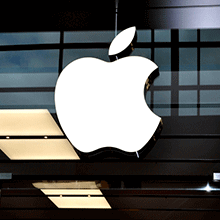In today’s technologically advanced world, understanding the role of innovative software in leadership strategies has become imperative for any organization looking to excel. More than ever, productivity reporting, a critical aspect of effective management, is being revolutionized by the adoption of such software. This transformation aims to change how we view and practice leadership in the contemporary workplace, not only to increase productivity. This article will delve deep into how innovative software is redefining leadership and enhancing productivity, setting a new benchmark for what effective leadership looks like in the digital age.
The Evolving Face of Leadership
Over time, there has been a considerable change in leadership. This transition from conventional leadership styles to contemporary, technologically oriented strategies can be seen.
Traditional Leadership Vs. Modern Leadership
- Traditional Leadership: Historically, leadership was seen in a hierarchical structure where orders were issued from the top and followed by those below. It was about maintaining control, and decisions were usually centralized.
- Modern Leadership: With societal and technological changes, leadership has evolved. Modern leadership leans towards fostering collaboration, facilitating open communication, and encouraging innovation. Decisions are often decentralized, and leaders act more as guides rather than dictators.
The Impact of Technology on Leadership
This progression has been accelerated by technology. It has given executives tools to improve team management, make wise decisions, and boost productivity. Here’s how:
- Remote Leadership: With the advent of technology, leaders can effectively manage their teams from anywhere, making leadership more flexible and accessible.
- Data-Driven Decision Making: Technological tools provide leaders with valuable data that help them make informed and strategic decisions.
- Increased Collaboration: Technology has provided platforms that foster real-time collaboration, breaking down geographical barriers and enabling diverse, global teams to work together seamlessly.
Innovative Software and Its Role in Productivity
As the business landscape evolves, the potential of innovative software to amplify productivity has been pushed to the forefront of many strategic conversations.
Understanding Innovative Software
Innovative software is a new breed of programs that make use of cutting-edge technology developments to simplify processes, improve decision-making, and address complex issues. Artificial intelligence, machine learning, cloud computing, and big data analytics are frequently integrated into these products. They are created to go beyond conventional software products by offering distinctive, dynamic solutions to problems that are constantly changing.
How Innovative Software Boosts Productivity
The productivity-enhancing potential of innovative software is immense. Here’s how these cutting-edge tools contribute to increased productivity:
- Automating Routine Tasks: Many innovative software tools can automate repetitive and time-consuming tasks. This allows team members to focus on more complex and creative aspects of their work, thereby improving overall productivity.
- Real-Time Collaboration: Software solutions that provide real-time collaboration features allow team members to work together seamlessly, irrespective of their geographical location. This promotes a higher level of coordination and efficiency within teams.
- Data-Driven Insights: Innovative software often has the capability to collect, analyze, and present data in an accessible format. These insights aid leaders in making informed, strategic decisions that can boost productivity.
Organizations can considerably increase their productivity levels and foster a more productive workplace by comprehending and utilizing the potential of innovative software.
Revolutionizing Leadership Through Software Innovation
As software innovations continue to break new ground, their integration into leadership strategies has become a revolutionary trend.
The Intersection of Leadership and Technology
Today’s leaders must use technology to streamline procedures and empower people as well as focus on people and processes. Here is where cutting-edge software is useful. Such software enables managers to manage teams, assign tasks, gather and analyze data, and make strategic choices. Software innovation has essentially turned leadership from an art to a science.
Case Studies of Successful Implementation
Many organizations have successfully integrated innovative software into their leadership approaches, yielding impressive results. Here are a few examples:
- Google: Known for its innovative culture, Google uses data analytics tools extensively for decision-making. They also use collaborative software to manage their globally dispersed teams.
- Amazon: Amazon uses machine learning algorithms to predict future trends and make strategic decisions. Their leadership is highly driven by data, with innovative software playing a key role.
These case studies show that cutting-edge software changes how leadership is viewed and practiced, not only as a tool. By embracing these technologies, executives can change their strategy, strengthening decision-making, increasing efficiency, and eventually increasing production.
Challenges and Strategies in Implementing Innovative Software for Leadership
While innovative software promises significant benefits, the journey to successfully integrating it into leadership practices can come with its own set of challenges. But with the right strategies, these hurdles can be effectively overcome.
Potential Challenges in Implementation
Several potential challenges may surface during the implementation phase of innovative software, including:
- Resistance to Change: Employees often resist changes, especially those involving technology, due to fear of the unknown or discomfort with new systems.
- Training Requirements: Innovative software may necessitate training to ensure all users are comfortable with the system and can use it effectively.
- Integration Issues: There may be compatibility issues between the new software and existing systems, which can disrupt normal business operations.
Strategic Approaches to Overcome Challenges
Addressing these challenges requires strategic planning and proactive management. Here are some potential solutions:
- Transparent Communication: Leaders should communicate the benefits of the new software and how it will impact the team positively. This can help reduce resistance to change.
- Comprehensive Training: Providing extensive training and support ensures all users are comfortable with the system, enabling them to use it to its full potential.
- Phased Implementation: Rather than implementing the software all at once, a phased approach can help teams adjust gradually to the new system, reducing the disruption to regular operations.
By anticipating these challenges and having a strategic plan in place, leaders can smoothly integrate innovative software into their management practices, reaping the benefits of increased productivity and effective leadership.
Conclusion
A new era of leadership has begun in the digital world, one in which cutting-edge software is essential. These innovative solutions have the power to increase productivity, simplify procedures, and facilitate data-driven, strategic decision-making. Although there may be obstacles in the way of putting these systems in place, leaders who are prepared with the correct tactics can effectively make their way through this shift.
Embracing this technological revolution isn’t merely an option anymore; it’s a necessity for any leader aiming for success in the modern landscape. By leveraging innovative software, leaders can not only enhance their team’s productivity but also revolutionize their approach to leadership, creating an effective, efficient, and forward-thinking work environment. The time to innovate and adapt is now. Be part of the revolution and redefine what leadership means in the 21st century.





















